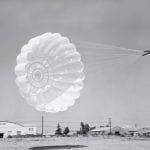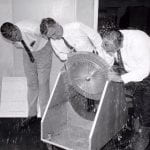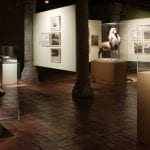reading is believing (or is it?)
‘The caption permits me to focus not only my gaze, but also my understanding’ (Barthes, 1977, p.39)

This session aims to introduce participants to Barthes (1977) idea of the caption ‘anchoring’ photographs with meaning and they way we view / understand photographs in relation to such ‘informatory’ text, as well as the context they are viewed in. Using real-life news captions, participants will explore the veracity of the photograph (or not), as well as specifically practicing thier technical skills in construction and story-telling.
‘Photography’s plausibility has always rested on the uniqueness of its indexical relation to the world it images, a relation that is regarded as fundamental to its operation as a system of representation. For this reason, a photograph of something has long been held to be a proof of that thing’s being, even if not of its truth’ (Batchen, 2002, p.139)
This Session could be run in conjunction with:

‘In the Photograph, the power of authentication exceeds the power of representation’ Barthes, 1980, p.89)
Aims & Outcomes:
- For participants to explore the construction of photographs in response to real-life captions
- For participants to consider the reality of the photograph (or not) and how our understanding may be led by caption / title / headlines and the context we consume them in
- Participant Outcome: 3 (edited) final 6×4 digital prints
‘What is true of photographs is true of the world seen photographically’ (Sontag, 1977, p.79)

You Will Need:
- Digital cameras for all participants (and appropriate memory cards) *This session can also be run using Camera phones or Lumix cameras
- Card readers
- Access to computers (or laptops)
- A selection of real life news photographs (for participants to write captions). You can devise your own or there are some useful examples and questions here
- A selection of real-life captions (for participants to make photographs)
- An introductory brief & Presentation (below) for participants to outline the ideas and provide examples
- A booked room to critique participants work (either via a projector or via print)
- Blue tack to pin the work
- Costings and Risk Assessments

‘Various theories are being considered that would explain its exceptionally well preserved state. The arched posture of the spine and the fact that the front limbs are close together and the cranium side-on reveal that this hydropithicus was buried rapidly while it slept, which would also explain why the bones have not broken up, despite the disappearance of the soft parts (muscles, ligaments etc). The cause of death and subsequent covering up of the skeleton could be an underwater landslide’ (Fontcuberta in Cotton, 2004, p.202)
Caption ideas:
*You can also make your own using news stories, Twitter etc / or you might ask participants to find / bring them and swap with a partner.
- Woman Finds Hat in a Tree (Harrogate Advertiser)
- Yellow Object Spotted in the Sky (Metro Herald)
- Anger at Recycling Banks Removal (Falmouth Packet)
- Cows Lose thier Jobs as Milk Prices Drop (The Balitmore Sun)
-
Day of the Triffids gets real as horrific sheep-eating plant grows in Truro (Cornwall Live)
Presentation ideas: Is reading leading?
Preparation Work:
- Ask participants to read Sandra Phillips (2017) ‘A History of the Evidence’ in The Paris Review, 3rd May 2017 available here
- Ask participants to watch the video Joan Fontcuberta Stranger than Fiction (2014) available here
- Ask participants if they have thier own digital cameras and cards
- Make sure you have access to computers / image editing software
- Make sure there are enough team members to support participants (never assume thier prior knowledge)
- Decide whether you will project the work or print it.
- If you are printing it make sure the Photo Lab are aware and be aware of timekeeping so they have space to print the work.
- *If you are running this session off campus, make sure there is access to printers or projectors
























